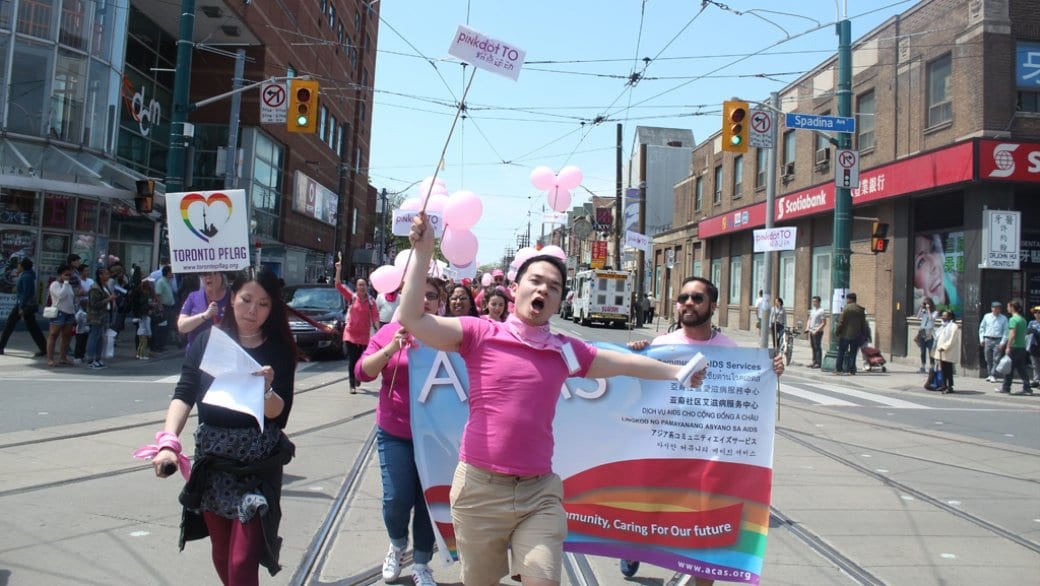After shouting at the top of his lungs for 45 minutes as he led marchers through Toronto’s Chinatown, Brian Bao-Ly was understandably a little worn out.
“But I still have a voice!” he says enthusiastically.
Bao-Ly, a staff member at Asian Community AIDS Service, was one of the dozens of people, all dressed in hot pink, who had gathered on the afternoon of Saturday, May 21, 2016, to make themselves heard on the streets as part of Pink Dot TO.
Organized by the ACAS and the Chinese Canadian National Council’s Toronto chapter, this is the third year the event has been put on.
There was a mix of speeches, musical and dance performances and a loud, very pink, rally that all emphasized Asian LGBT visibility.
Bao-Ly said that the purpose of Pink Dot TO was to show support for LGBT Asian people in the city.
“Because sometimes you don’t get that at home, sometimes you don’t get that at work,” he says. “We try to show that it might be hard, but little steps are okay.”
Bao-Ly, a born-and-raised Torontonian, said that when he was in school, it could be very difficult.
“I identify as gay, I identify as queer, I identify as Asian, and I didn’t really find that kind of support network within my own school, within my own community,” he says.
Chase Lo, a member of CCNC, sees marching through Chinatown as a way of asserting visibility to the families of LGBT Asian people.
“It can be a hard place for many people who are Asian and also LGBT-identified, whether your parents accept you, whether you’re able to be open to them about your sexuality or your identity,” he says. “I think this is way for us to take up space and to do it in a really fun way,” he says.
But Lo hopes that Pink Dot TO continues to grow through the years.
“I would love to see it happen in the Village or Yonge Street,” he says. “I see this as an Asian version of Pride.”
Pink Dot has its roots in Singapore, where the government continues to deprive LGBT citizens of a variety of rights. Since 2009, thousands of people dressed in pink have gathered in Hong Lim Park once a year and formed a “pink dot” visible from the sky.
“It is a political movement, but it’s also to show support, to show a community within the community,” Bao-Ly says.
Annie Sun, a member of CCNC’s advocacy committee, says that she hopes Pink Dot will continue to expand outside of downtown Toronto and into the suburbs, where people may not have as much immediate support.
“This event for me is about love—boundless, abundant love,” she says.
The theme of this year’s Pink Dot TO — love across generations — was especially important to Sun, who recently turned 31.
“Legally I’m not a youth, but I still want to contribute to my community,” she says. “What we’re doing is we’re transforming that whole conversation to complete disappear and eliminate the gaps of what love is as a possibility.”
For Bao-Ly, he can see himself doing this sort of advocacy for a long time.
“I think I’m probably going to do this the rest of my life,” he says.

 Why you can trust Xtra
Why you can trust Xtra


